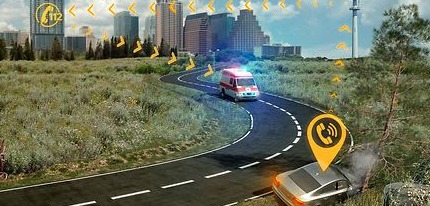From April 2018, every vehicle in the European Union (EU) with a new type approval must have the eCall automatic emergency call system installed meaning connectivity will be standard.
Technology company Continental has been developing telematics units since 1996 and welcomes the decision of the European Commission (EC). “For us, eCall means that we are a huge step closer to Vision Zero mobility without road deaths or injuries as help is now automatically on its way in the case of an accident,” said Johann Hiebl, head of Continental’s Infotainment & Connectivity business unit.
“By using the telematics unit for other applications, such as real-time information about traffic flows or potential hazards, accidents can even be actively avoided and congestion minimised.”
The eCall system automatically sends an emergency alert with the vehicle’s exact location to the closest appropriately equipped public-safety answering point. The system uses the standard emergency number in Europe, 112. It’s thought this could reduce response times by up to 40% in urban areas and up to 50% in rural areas.
The system is activated by the triggering of the airbag control unit. It’s also possible to trigger an emergency call manually, for example if a driver witnesses a serious accident.
According to the European standard, a minimum set of data must be transmitted to the public-safety answering point. This data telegram is 140 bytes long and contains information selected on the basis of its relevance in an emergency rescue situation, like the time of the emergency call, the vehicle type and location, the drive type, the number of passengers, the direction of travel, the way in which the emergency call was triggered and other information.
The vehicle hardware used for the eCall function is the in-built telematics unit, which primarily consists of a modem, a satellite positioning (e.g. Galileo) antenna and the electronics required for connection to the vehicle, and possibly a back-up battery.
“However, eCall is just one of over 100 functions that could be integrated in the telematics unit of all new vehicles,” said Hiebl. “It is an important cornerstone of holistic connectivity, so from April 2018 at the latest, the car will become a smartphone on wheels, bringing the mobile and digital worlds together.”
The new functions and services enabled by connectivity in the vehicle include software updates for all vehicle electronics, which are performed wirelessly via an air interface without visiting a dealer workshop, as well as remote and anticipatory vehicle diagnostics. Connectivity can also be used for V2X, so vehicles can warn each other of hazards en route.
To further expand and enhance its telematics business, Continental is working on integrating the new mobile network standards LTE-Advanced and 5G into the vehicle. eCall-based telematics systems are ready for production at Continental. The company says these can be adapted to the requirements of individual vehicle manufacturers and delivered at short notice.


